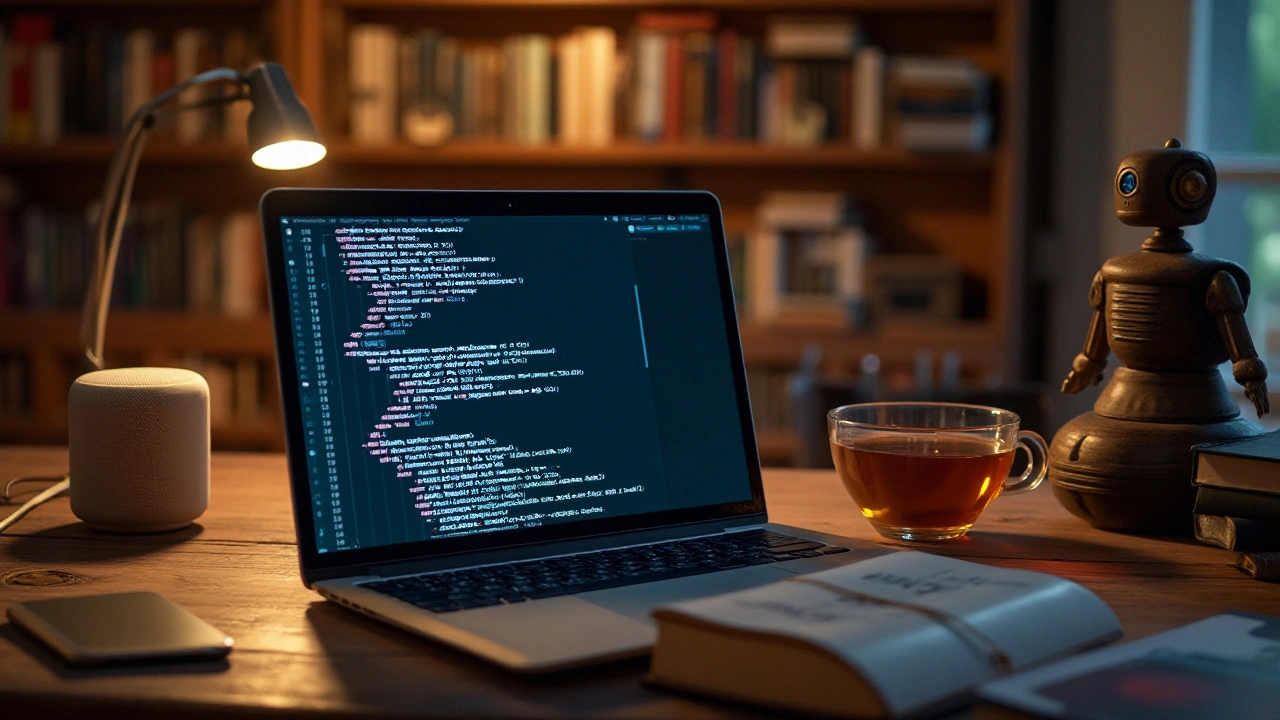Python Coding Made Simple and Powerful
If you’re thinking about Python, you’re on the right track. Python isn’t just another programming language—it’s a tool that makes coding more straightforward and effective, whether you're just starting or looking to sharpen your skills. You might wonder why so many developers and companies rely on Python. One reason is its clean syntax that feels like writing plain English. This means less fuss over complex grammar and more focus on solving real problems.
Want to code smarter in Python? Here’s a quick heads-up: mastering the basics is key, but exploring clever Python tricks can give you a serious boost. For example, using list comprehensions can replace long loops, making your code shorter and faster. Or, try Python's built-in functions like map and filter to handle data cleanly. These small habits save time and make your code easier to read down the line.
Debugging Like a Pro With Python
Every coder runs into bugs; the difference is how quickly you fix them. Python has powerful debugging tools that help you catch errors early. Take the built-in pdb module—it lets you pause your program and inspect variables on the fly. When you spot a bug, don’t just guess—trace through your code line by line to find out what’s really going on. This approach cuts down frustrating trial and error and saves hours that add up quickly.
Also, be sure to write descriptive error messages and use assertions to catch unexpected issues. These techniques act like checkpoints, alerting you early if something’s off. Over time, sharpening your debugging skills will make your coding life less stressful and much more fun.
Why Python and AI Are a Perfect Match
Python is hands down the go-to language when it comes to AI and machine learning. From beginners to experts, the huge Python ecosystem offers tons of libraries like TensorFlow and PyTorch that handle complex AI tasks so you don’t have to build everything from scratch. If you're curious about coding smarter AI projects, learning Python’s AI-friendly tools is a smart move because they let you focus on ideas, not low-level details.
Even if you’re new to AI, starting with Python opens doors. You can experiment with data, train simple models, and build apps that learn over time. The community around Python is huge with tons of tutorials and examples to keep you moving without hitting dead ends. If you want to keep up with the tech trends in 2025 and beyond, Python paired with AI is a combo you don’t want to miss.
Ready to take your Python skills to the next level? Focus on daily practice with real projects, keep learning new tricks, and don’t shy away from debugging challenges—they’re your best teachers. Python is here to stay, and with the right mindset, you’ll be coding smarter and faster in no time.

- Jun 8, 2025
- Alfred Thompson
- 0 Comments
Python and AI: Why They Work So Well Together
Python and AI are like peanut butter and jelly—they just click. This article shows why Python is the top pick for building AI, thanks to its easy code and giant toolbox. You'll get a peek into why developers love Python when it comes to smart machines, learn some real shortcuts, and spot tips to make AI work for you faster. Come see what makes this combo so powerful and how you can use it in your own projects.

- Mar 16, 2025
- Andrew Harper
- 0 Comments
Demystifying Python for AI: Your Starter's Guide
Python is the go-to language for AI development, thanks to its simplicity and rich set of libraries. This guide unravels Python's role in AI, offering insights on its user-friendly syntax and powerful tools like TensorFlow and PyTorch. Perfect for beginners, it covers setting up your environment, basics of AI concepts, and practical coding tips. Learn why Python is favored by experts and how you can leverage it in your AI projects.

- Feb 16, 2025
- Mitchell Benson
- 0 Comments
Why Python is Perfect for AI Development
Python stands out as the go-to language for AI development, thanks to its simplicity, rich set of libraries, and active community. It's designed to be easy to read, making it perfect for both beginners and experts. With tools like TensorFlow and PyTorch, Python leads the charge in artificial intelligence solutions. Whether you're building chatbots or predictive algorithms, Python's flexibility and resources make it an excellent choice for AI enthusiasts.

- Jan 28, 2025
- Andrew Harper
- 0 Comments
Python and Artificial Intelligence: Revolutionizing Tech Together
Python is a versatile programming language that has become indispensable in the field of artificial intelligence. Many tech experts choose Python for its readability and extensive libraries, which make it easy to develop sophisticated AI applications. This article delves into Python's role in AI, exploring why it's the preferred language for developers, the benefits it offers, and how non-programmers can engage with both Python and AI.

- Jan 21, 2025
- Maxwell Sterling
- 0 Comments
Harnessing Python for AI: Transforming the Coding Landscape
Python has emerged as a powerhouse in the field of artificial intelligence, driving innovation and accessibility in coding. This article explores the synergy between Python and AI, highlighting why Python is the language of choice for many developers today. Discover historical influences that shaped its role, and gain insights into the tools that make it a favorite in AI development. Learn how Python's simplicity and flexibility accelerate AI projects, and tips for making your AI coding more efficient.

- Jan 19, 2025
- Travis Lincoln
- 0 Comments
Revolutionizing the AI Industry with Python: A Modern Approach
Python has become a cornerstone in the development of artificial intelligence, simplifying the process and offering robust solutions. Its simplicity and versatility make it a preferred choice among developers and researchers alike. This article discusses how Python is influencing AI, from easing the implementation of complex algorithms to fostering innovation in machine learning. Discover the reasons behind Python's dominance in AI technology and explore practical tips for leveraging its power in your projects.

- Jan 7, 2025
- Travis Lincoln
- 0 Comments
Harnessing Python's Power in AI Development: A Futuristic Insight
Python has emerged as a dominant force in artificial intelligence development due to its simplicity and robust libraries. This article explores the journey and influence of Python in the AI field, providing insights and tips for leveraging its capabilities. From deep learning frameworks to real-world applications, discover how Python serves as a bridge between ideas and innovation. Stay ahead in the tech world by understanding the synergy between Python and AI, and how it drives technological advancements.

- Sep 29, 2024
- Alfred Thompson
- 0 Comments
Python for AI: Unlocking the Future of Programming
Python has become the go-to language for AI development. This article explores why Python is perfect for AI projects, touches on key libraries, and offers practical tips for aspiring developers.

- Aug 18, 2024
- Clayton Shaw
- 0 Comments
Python and AI: Unlocking Future Technological Potential
Python and AI together create a powerful combination that fuels innovation across multiple sectors. This article delves into how the ease of Python programming enhances AI development, explores its vast applications, and offers practical tips for beginners. Discover the exciting future this dynamic duo promises.

- May 30, 2024
- Mark Cooper
- 0 Comments
Top Python Tricks to Boost Your Code Efficiency
Learn how to make your Python code more efficient with these handy tricks. From list comprehensions to proper use of built-in functions, we'll explore ways to streamline your coding process and make your programs run faster. Perfect for beginners and experienced programmers who want to enhance their coding skills.
